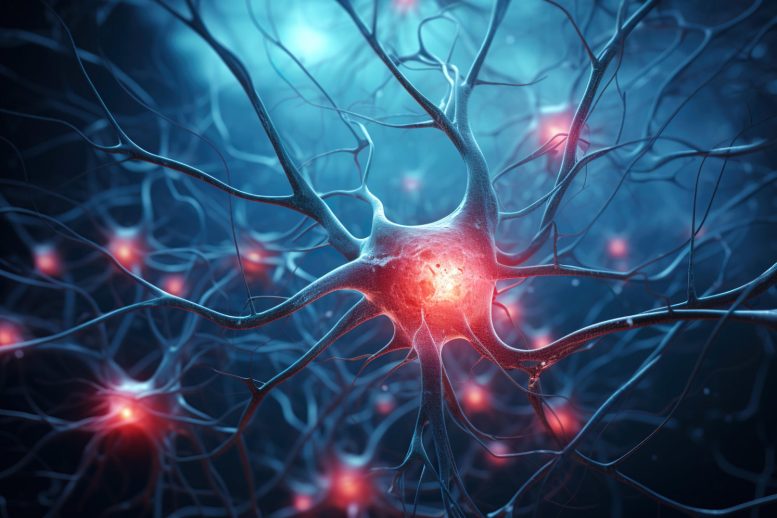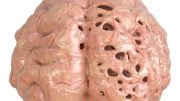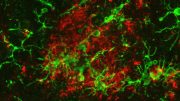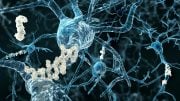
Researchers have developed a 3D human cellular model to study the complex interactions between immune cells and brain cells in Alzheimer’s disease (AD). The model has revealed how specific immune cells amplify brain damage in AD, offering new targets for potential therapies.
The model offers valuable perspectives on the progression of AD and may speed up the testing of new treatments.
The decline in cognitive function linked to Alzheimer’s disease occurs as neurons start to die. This can result from faulty immune reactions and heightened inflammation in the brain, instigated by the accumulation of amyloid beta deposits and tau tangles, two hallmarks of the disease.
Additionally, immune cells like T cells, which are normally found outside the brain, can penetrate brain tissue and exacerbate the condition. However, researching this particular aspect has been difficult.
Now, a team led by researchers at Massachusetts General Hospital (MGH) has engineered a novel 3D human cellular model that mimics the intricate interactions between brain cells and these immune invaders. The work, which builds on previous 3D models of AD developed by the team, is described in Nature Neuroscience.
In the new study, the team used the model to demonstrate that as Alzheimer’s pathology accumulates in the brain, specific types of immune cells called CT8+ T Cells surge into the brain and amplify the destruction caused by neuroinflammation.
The team also identified the molecular mechanisms that drive the infiltration of T cells to the brain and showed that blocking these mechanisms reduced the destructive effects of T cell infiltration.
The findings could lead to new therapies for Alzheimer’s patients that target immune cell infiltration in the brain.
“Enabled by cutting-edge microfluidic technology, this model opens up a window to observe infiltrating peripheral immune cells in action within 3D cell cultures; their interactions with brain cells; and their impact on neuroinflammation and neurodegeneration,” says co-lead author Mehdi Jorfi, PhD, instructor in Neurology at MGH.
“We hope our work contributes to developing a more physiologically relevant human Alzheimer’s disease model in a dish,” adds co–senior author Doo Yeon Kim, Ph.D., associate professor of Neurology at MGH.
The team’s new model is a 3D human neuroimmune axis model is comprised of stem-cell-derived neurons, astrocytes, and microglia along with peripheral immune cells.
The model is an extension of previous work done by the research team to create and validate 3D lab models of AD that better replicate the hallmark plaques and tangles of the disease in a three-dimensional environment—much in the same way the disease develops in the brain.
In addition to observing higher levels of T cells in AD brain models, the team identified a pathway between a chemokine (CXCL10) and chemokine receptor (CXCR3) that plays a key role in regulating T cell infiltration.
Blocking this pathway largely prevented T-cell infiltration and neurodegeneration in AD cultures.
The findings could help in identifying new therapeutic targets that slow or halt the infiltration of T cells into the brains of Alzheimer’s patients, and potentially reduce the devastating cognitive impacts of the disease.
“his multidisciplinary research approach identified the different behaviors of distinct cell types in this disease context, and we aim to shed light on the underlying mechanisms to identify strategies for intervention that could lead to more effective treatments,” said co–lead author Joseph Park, Ph.D., instructor in Neurology at MGH.
Additional targets may be identified with continued experiments with this model.
“Perhaps, what is most exciting about this study is that we have identified a new drug target on T cells, outside of the brain, which would be more accessible to novel treatments, especially since it has been traditionally difficult to get drugs into the brain,” says senior author Rudolph Tanzi, PhD, director of the Genetics and Aging Research Unit at MGH.
Reference: “Infiltrating CD8+ T cells exacerbate Alzheimer’s disease pathology in a 3D human neuroimmune axis model” by Mehdi Jorfi, Joseph Park, Clare K. Hall, Chih-Chung Jerry Lin, Meng Chen, Djuna von Maydell, Jane M. Kruskop, Byunghoon Kang, Younjung Choi, Dmitry Prokopenko, Daniel Irimia, Doo Yeon Kim, and Rudolph E. Tanzi, 24 August 2023, Nature Neuroscience.
DOI: 10.1038/s41593-023-01415-3
This work was supported by the Cure Alzheimer’s Fund and the JPB Foundation.









Be the first to comment on "Unlocking the Secrets of Alzheimer’s: New 3D Model Sheds New Light on Brain-Immune Interactions"